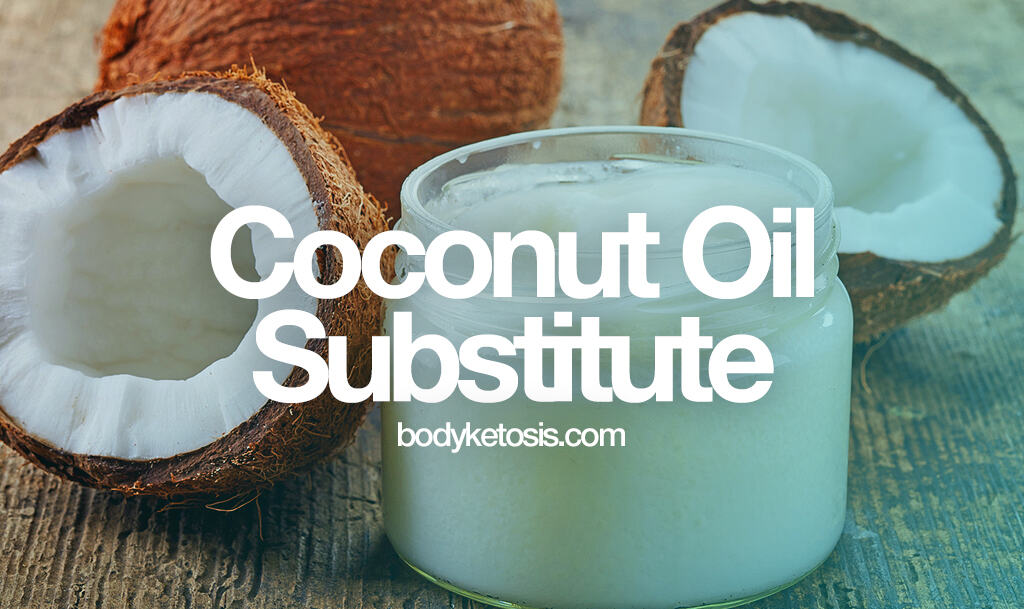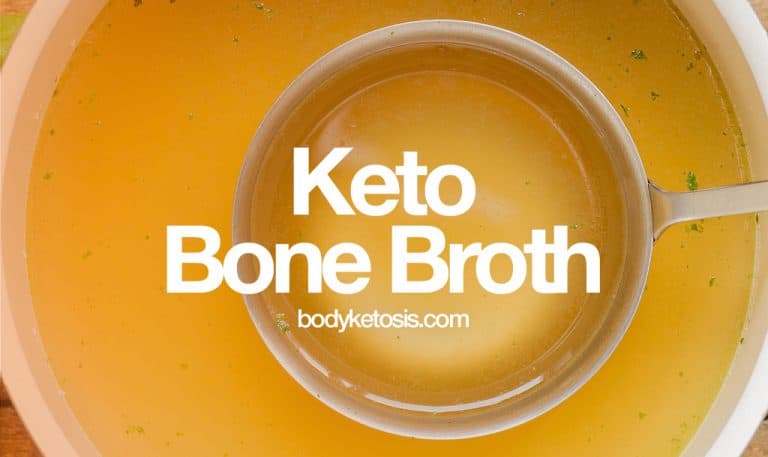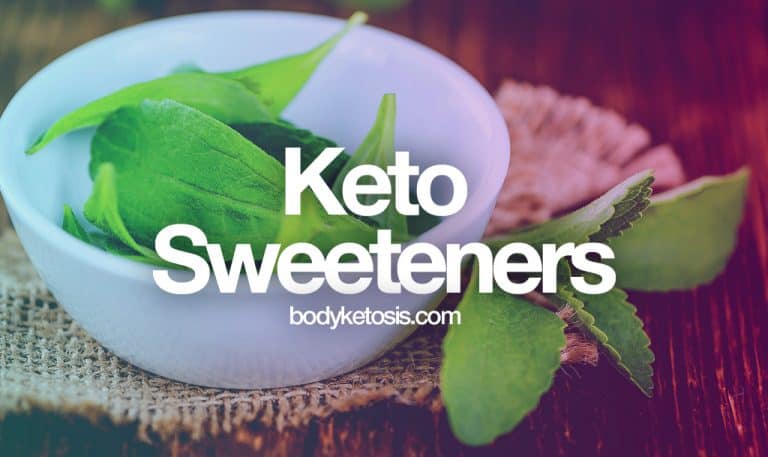Best Coconut Oil Substitutes for Skin, Hair & Cooking

A versatile ingredient used in cooking and cosmetics, coconut has garnered the attention of both health and beauty communities.
But it has especially become popular among paleo and keto diet followers.
From coconut oil and coconut milk to coconut butter and coconut flour, there are so many uses of this tropical fruit in these popular diets.
However, not everyone can and want to use coconut. Some people have coconut allergies, while others find its taste a bit overpowering.

Coconut products are also high in fat, which is not always a good thing on certain types of eating plans. Whatever your reason for avoiding coconut, know that there is always an alternative that closely resembles the original.
Replace Coconut Oil In Coffee
Keto dieters often advocate for replacing breakfast with Bulletproof coffee, aka butter coffee or keto coffee. In case you don’t know what keto coffee is, it is a concoction of coffee, butter, and oil (usually coconut or MCT powder). Drinking keto coffee in the morning is said to raise your energy levels and help keto-ers get into ketosis.

Luckily, there is more than one way to make keto coffee, and the process is not entirely dependent on coconut oil. All you need is a different source of saturated fat (the main type of fat found in coconuts) and, ideally, medium-chain triglycerides (MCTs), which are the primary saturated fat in coconut. Here are just a couple of sources of these nutrients:
- Butter – Butter is around 80% milkfat, more than half of which is made of saturated fatty acids [1]. A piece recently published in Current Nutrition Reports has debunked the wide-held belief that saturated fat is unhealthy [2]. So, feel free to add butter to your coffee to energize your day with saturated fat.
- Ghee – Ghee is a type of clarified butter with a slight caramel taste. Like all clarified butter, it is entirely composed of milkfat. Two tablespoons ghee provide around 14g saturated fats, which is the exact amount of ghee used in the original Bulletproof coffee recipe.
- MCT oil – MCT oil is a dietary supplement and a concentrated source of two types of MCTs: caprylic acid (C8) and capric acid (C10). These two fatty acids are naturally found in coconut oil but to a small extent. Replacing coconut oil with MCT oil in coffee is a great way to stay fuller for longer [3]. You can also go for MCT creamers for better blending.
Replace Coconut Oil In Cooking
The high saturated fat content of coconut oil means that it can withstand a lot of heat compared to many other oils. Coconut oil also gives a delicious taste and crunchy texture to food. Still, the smoke point of virgin coconut oil is around 350 °F (171 °C), which is lower than sunflower oil and not high enough for frying.

Some also find the flavor of virgin coconut oil overpowering. For these and many other reasons, people will substitute coconut oil for the following fats:
- Clarified butter – Another cooking fat that’s rich in saturated fatty acids is clarified butter. It has a high smoke point of 482 °F (250 °C), which is well above most cooking oils as well as typical cooking temperatures. That makes clarified butter one of the best cooking fats there is. It also has a fairly mild flavor that goes well with almost any dish imaginable.
- Lard – If you want to reduce saturated fats in your diet, you should consider cooking with lard. Unlike other animal fats, lard is composed mostly of monounsaturated fats (MUFAs). But keep in mind that 40% of lard is still saturated fat. Nonetheless, its smoke point is 250–424 °F (121–218 °C), which is higher than most other types of cooking fat. It also gives a crisp and crumbly texture to food.
- Plant oil – Healthful plant oils include cold-pressed and unrefined ones like olive oil, avocado oil, and high-oleic sunflower oil. These oils are high in MUFAs, which studies show are beneficial for health [4]. Go for olive and avocado oil to add flavor and use oleic sunflower oil when a recipe requires a neutral oil.
Note: Whichever oil or fat you use to replace coconut oil, it’s important to be mindful of its smoke point. An oil’s smoke point is the temperature at which it starts to burn. This tends to generate free radicals and other harmful compounds, and studies have shown that eating overheated oils leads to inflammation and a greater risk of cardiovascular diseases [5].
Replace Coconut Oil for Beauty/cosmetic uses
Besides using it as food, coconut oil is also a common cosmetics ingredient. It’s added to hair conditioners, lip balms, moisturizers, and toothpaste. Some also use coconut oil as a DIY self-care ingredient.

Examples include using it to remove makeup, to clear acne, and to whiten and clean teeth (aka oil pulling). However, it is a heavy type of oil and can be irritating to some skin types. Also, those with coconut allergies will need to look for an alternative oil.
For the skin
- Jojoba oil – Despite its name, jojoba oil is actually a waxy substance extracted from the jojoba shrub. Its consistency mimics that of human sebum, which makes it really friendly for your skin. A 2018 studies review even found that its helpful for eczema, dermatitis, and acne [6].
- Avocado oil – Avocado oil is extracted from the pulp of the fruit. It’s rich in skin-benefiting fatty acids, vitamin E, vitamin C, and antioxidants. There’s evidence that it helps heal wounds, reduce inflammation, and boost collagen synthesis [6].
- Sea Buckthorn Oil – A relatively new skincare ingredient, sea buckthorn oil is known for its anti-aging benefits. Researchers believe that this partially has to do with the oil’s abundance in antioxidants but also its unique unsaturated fatty acids, such as palmitoleic acid (omega-7) [7].
For the lips
- Cocoa butter and shea butter – Both are highly popular lip balm ingredients, but you can use them on their own to heal chapped or dry lips. The skin of your lips is much thinner than the rest of your face, and it also does not have any oil or sweat glands. That’s why you should protect your lips with a thick emollient like cocoa and shea butter.
For the hair
- Tea tree oil – A volatile oil that has antiseptic and anti-inflammatory properties just like coconut oil. A couple of drops added to your shampoo is effective for mild to moderate dandruff [8]. Make sure to leave it on your scalp for 2-5 minutes before rinsing to give it time to kill off the Malassezia yeast that cause most cases of dandruff.
- Grapeseed oil – Like coconut oil, grapeseed oil is able to penetrate the hair strands while also coating them. This is an important feature for successful hair conditioning. You can use this oil before washing your hair as a pre-treatment or add a couple of drops to seal in moisture into your strands after cleaning your hair.
For the teeth
- SLS-free toothpaste – Those with coconut allergies can be allergic to coconut-derived ingredients like coconut diethanolamide, cocamide sulphate, cocamide DEA, CDEA, and SLS. Many of these are added to toothpaste. Check the label for these ingredients and go for natural toothpastes if you suspect you have a coconut allergy.
- Baking soda – As an alternative for oil pulling, consider occasionally brushing your teeth with baking soda. It’s proven to remove plaque in 5 studies involving 270 subjects [9]. However, do not overdo it to avoid damage to tooth enamel. Also, avoid rinsing your teeth with acidic ingredients like lemon juice or vinegar since these will erode tooth enamel when done in excess.
Replace Coconut Milk/Coconut cream
Sweet and creamy, coconut milk is a great alternative for a lot of dairy milk products. The canned variety is the real deal, i.e. authentic coconut milk, while the carton version is diluted and often contains sweeteners, vitamins, and preservatives.

Coconut cream, on the other hand, is coconut milk but with less water. Finding a true replacement for both can be tough, but not impossible.
- Almond milk – Almond milk is thinner than coconut milk, but it is sweet and somewhat mild. If a recipe calls for thick coconut milk, use almond milk and add almond or cashew paste to thicken it up. Keep in mind that the flavor will not be the same.
- Heavy cream – Where a recipe calls for coconut milk, you can replace it with the same amount of heavy cream or half-and-half. The taste is mild and the fat content similar to coconut milk. You can also add vanilla extract to achieve a similar flavor where important.
- Cashew milk – Cashew milk has a slightly sweet taste that’s comparable to dairy milk. It is slightly higher in carbohydrates than other plant drinks at 4.5g per one 8oz serving.
- Light coconut milk – If fat content is your main concern, then just go for light coconut milk. Regular, canned coconut milk is 21% fat, while light coconut milk is around 9% fat. If using in Thai curries, you can thicken it up with starch or Glucomannan powder if you’re on a low-carb diet.
If you’re not on a low-carb diet, you can also use soy milk. One cup of soy milk typically contains around 13g net carbs. Otherwise, it’s one of the best sources of quality protein and is nutritionally quite similar to dairy milk and can be used in place of coconut milk in certain recipes.
Replace Coconut Flour
Substituting flours is always a tricky endeavor, especially in baking. Different flours vary greatly in their nutrient composition, and this plays a huge part in how they behave during cooking.

That’s why coconut flour cannot be substituted on a 1:1 ratio for other flours. With that said, here are some substitutes for coconut flour and how to get it right.
- All-purpose flour – If not on a low-carb, paleo, or gluten-free diet, you can substitute 1/4 cup of coconut flour with one cup all-purpose flour and one egg to add moisture and structure. You may also adjust the liquids in the recipe.
- Almond flour – Replace every 1/4 cup of coconut flour with around 1 cup of almond flour. Coconut flour is known for its high absorbency, while almond flour tends to be moist. The same rule applies to other nut flours like hazelnut and walnut flours.
- Flax meal – Ground flax seeds can serve as a replacement for both coconut flour and eggs in many recipes. It’s also highly absorbent, but the taste and color differ quite a bit from coconut flour.
- Glucomannan powder and arrowroot powder – Both are great low-carb options for thickening sauces and desserts. They’re essentially indigestible carbohydrates, also known as dietary fibers. Glucomannan powder is mostly used as a prebiotic, while arrowroot is more popular as a corn and tapioca starch replacement.
Replace Coconut Flakes
Used in baking, garnishing desserts, and even rubbing and flavoring meat, coconut flakes are definitely a versatile ingredient. But, luckily, they’re also quite easy to replace in any recipe. Depending on whether you’re trying to replicate the crunch of coconut flakes or the flavor, consider some of these popular substitutes.
- Coarsely shredded nuts – Coarsely chopped or shredded almonds, hazelnuts, and Brazil nuts are a great substitute for coconut flakes in frying. They’re also perfect as breadcrumb substitutes.
- Shredded blanched almonds – Blanched almonds can replace coconut flakes in appearance and texture where required for decorative purposes. Adding a bit of vanilla extract also helps add more flavor to baked goods.
- Nut flours – Depending on the recipe, nut flours are also good substitutes for coconut flakes. The best substitute by far is almond flour as always. You may also consider using flax meal if you’re just looking to replicate the texture.
- Dried fruit – Dried goji berries and freeze-dried berries add a chewy texture similar to coconut flakes where needed. However, do avoid raisins, dried apricots, and dates since these tend to be high in sugar.
- Slivered almonds – Similar to dried berries, slivered almonds can replicate larger coconut flakes in granola and baked desserts. You can buy slivered almonds in most grocery stores.
Summary
Not everyone is a fan of coconut flavors, and some are even allergic to this tropical fruit.
And while finding substitutes for coconut products is easier for someone on more commonly followed eating plans, those following low-carb, keto, or paleo diets will find that replacing coconut products is tricky.
But it’s not impossible. As you’ve seen here, there are plenty ingredients that replicate the texture and, sometimes even, flavor of coconut. Just how much of each ingredient you should use in place of coconut depends greatly on the recipe.
Try and play with different ingredients until you get the desired results.

Alex is the founder of Bodyketosis, an author, low-carb enthusiast, and a recovering chubby guy who reclaimed his health using the ketogenic lifestyle. The need for the keto life began after his aunt and cousin were diagnosed with type 2 diabetes and he was next in line. Through personal experience and extensive scientific research, Alex offers insightful tips for everything keto.




![39 Best Keto Snacks to Buy [Sweets, Desserts & Crunchy Treats]](https://bodyketosis.com/wp-content/uploads/2018/02/keto-snacks-1-768x457.jpg)


